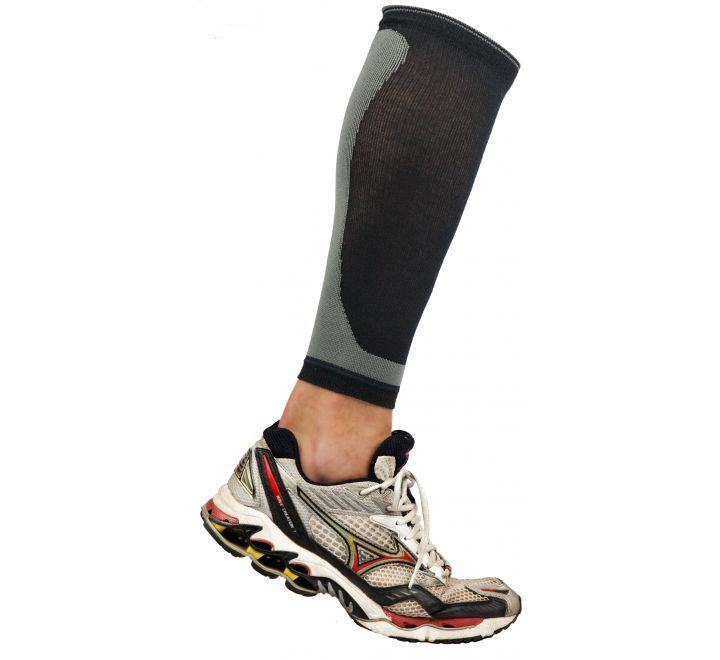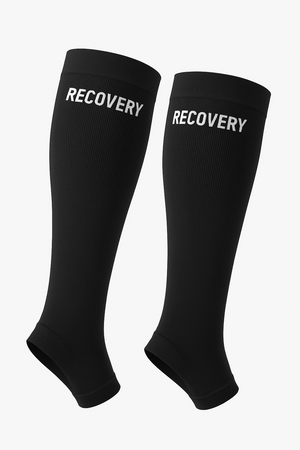Recovery Compression Sleeves: The Smart Way to Heal Faster
الجسم
Recovery compression sleeves are becoming very popular today. Many people who play sports, work out, or have pain in their arms or legs are now using these sleeves. But what are recovery compression sleeves? Why are they helpful? And how do they actually work?
In simple words, recovery compression sleeves are tight-fitting cloth sleeves that you wear on your arms or legs. These sleeves gently press against your muscles. This gentle pressure helps your blood flow better and reduces swelling and pain. Many doctors, athletes, and fitness lovers now recommend using them regularly.
This article is your complete guide to understanding recovery compression sleeves. You will learn how they work, who should use them, and how to choose the best one. We’ll also look at the benefits and care tips to make them last longer. All the information is written in easy language, so anyone can understand.
Let’s explore how recovery compression sleeves can support your healing and give your muscles the care they need.
What Are Recovery Compression Sleeves?
Recovery compression sleeves are specially designed sleeves made to gently squeeze your muscles. They are usually worn on the arms, calves, knees, or thighs. The pressure they create helps to improve blood flow and reduce muscle soreness. They are very common among athletes, people who exercise regularly, and even those who sit or stand for long hours.
These sleeves are made from stretchy fabrics like nylon, spandex, or a blend of both. The material is breathable and fits tightly but comfortably on the skin. This tightness is what gives the compression effect.
Compression sleeves work by pressing on your blood vessels slightly, which helps the blood return to your heart faster. When blood flows better, your muscles get more oxygen and nutrients. This helps to repair damaged tissues and reduces swelling and fatigue.
There are different types of recovery compression sleeves. Some are light and used for daily wear, while others are heavy-duty and made for post-workout recovery or medical use. You can also find sleeves for elbows, calves, arms, thighs, knees, and even full-leg designs.
In short, recovery compression sleeves are a simple and effective way to take care of your muscles. They help you feel better faster after physical activity or injury. Whether you are an athlete or someone who just feels muscle pain, these sleeves can be very useful in your daily life.
How Do Compression Sleeves Help?
Recovery compression sleeves help the body in many ways. Their main function is to improve blood circulation. Better blood flow means your muscles get more oxygen. This speeds up the recovery process and reduces pain and swelling.
When you work out, your muscles face small tears and inflammation. This is normal. But without good care, the recovery can take time. Recovery compression sleeves help by reducing the pressure inside your muscles and draining waste fluids like lactic acid. Less waste means less soreness after exercise.
Another important benefit is reducing swelling. People who stand all day, travel for long hours, or have injuries often suffer from swelling. Wearing compression sleeves prevents this by keeping the fluids moving and not collecting in one place.
They also give gentle support to your muscles and joints. This support reduces the chance of injury, especially during workouts. Athletes use them not only for recovery but also during training to protect their muscles.
Many people say that wearing recovery compression sleeves makes their muscles feel fresh and relaxed. It also gives a feeling of warmth and stability, which can boost confidence and comfort.
Some sleeves are even designed with added features like infrared heating, cooling fabrics, or anti-bacterial coatings. These features make the healing process even more effective.
In simple terms, recovery compression sleeves are like a soft hug for your muscles. They keep the blood flowing, reduce swelling, and support healing. This is why so many people find them useful in their daily life.
Who Should Use These Sleeves?
Recovery compression sleeves can be helpful for many different types of people. They are not only for athletes or gym-goers. Anyone who wants better muscle health and faster healing can benefit from wearing them.
1. Athletes and Runners:
Athletes use their muscles a lot. After a tough training session or match, their muscles need to recover. These sleeves help reduce soreness and speed up muscle repair. They also wear them during performance for extra support.
2. People with Injuries or Surgery:
If someone has muscle injuries or just had surgery, their body needs help in healing. Doctors often suggest compression sleeves to improve blood flow and reduce swelling in the injured area.
3. Office Workers and Travelers:
People who sit for long hours often face swelling in their legs. Similarly, travelers who are on long flights or car rides may experience heavy legs. Recovery compression sleeves keep the blood moving and prevent discomfort.
4. Elderly People:
Older people often suffer from poor blood flow. Wearing these sleeves helps with leg pain, swelling, and even varicose veins. They feel more comfortable and supported during daily tasks.
5. People with Medical Conditions:
Some people have medical issues like lymphedema or deep vein thrombosis (DVT). In such cases, doctors recommend medical-grade compression sleeves to manage the condition.
6. Gym Beginners or Regular Exercisers:
Even if you’re new to exercise, you might face muscle pain. Using compression sleeves can make your journey smoother by reducing that post-exercise soreness.
To sum up, recovery compression sleeves are useful for almost anyone—young or old, active or not. If you have muscle pain, swelling, or need support for your legs or arms, these sleeves can really help.
Key Benefits of Using Sleeves
Recovery compression sleeves offer many simple but strong benefits. Let’s explore the key reasons why people love using them.
1. Faster Muscle Recovery:
When you wear compression sleeves after a workout, they help your muscles heal faster. By improving blood circulation, your body can carry more oxygen to your tired muscles. This cuts down recovery time.
2. Reduced Swelling and Inflammation:
If you suffer from swelling due to standing, sitting, or an injury, compression sleeves can help. They apply even pressure, which stops fluid from collecting in one place.
3. Less Muscle Soreness:
After a hard workout or a long day, your muscles may feel sore. These sleeves help flush out waste products like lactic acid that cause pain. You’ll feel more relaxed and ready for the next day.
4. More Comfort During Daily Tasks:
Compression sleeves also add support to your joints and muscles. Whether you’re cleaning the house, walking, or working, they make your legs or arms feel lighter and stronger.
5. Injury Prevention:
Many athletes wear compression sleeves during activity. This helps keep muscles steady, reduces vibration, and lowers the chance of strains or pulls.
6. Support for Medical Needs:
People with conditions like varicose veins or poor circulation can wear sleeves daily to manage symptoms. Some models are even doctor-approved for medical use.
7. Improved Appearance:
Some people wear them to make their arms or legs look slimmer or toned. The tight fit offers a neat look, especially under clothes.
In short, recovery compression sleeves are not just a trend. They provide real health and comfort benefits. They’re simple to use, affordable, and offer good support to anyone who wears them.
Choosing the Right Compression Sleeve
Choosing the right recovery compression sleeve is important. Not all sleeves are made the same, and your body may need something special. Let’s go over how to pick the best one for your needs.
1. Know Your Purpose:
Are you buying the sleeve for post-workout recovery, daily wear, travel, or injury recovery? Knowing your goal helps you choose the right fabric, fit, and compression level.
2. Choose the Right Size:
A sleeve that is too tight can stop blood flow. One that’s too loose won’t help at all. Always check the size chart provided by the brand. Measure your limb before buying.
3. Pick the Correct Compression Level:
Compression levels are measured in mmHg (millimeters of mercury).
-
15–20 mmHg: Light compression for daily use and travel.
-
20–30 mmHg: Medium compression for sports recovery and swelling.
-
30–40 mmHg: Medical-grade for serious issues.
Ask a doctor if you’re unsure.
4. Look at the Material:
The sleeve should be breathable, stretchable, and moisture-wicking. Materials like spandex, lycra, and nylon are common. Soft seams and anti-odor fabric are also a plus.
5. Choose a Trusted Brand:
Not all brands give the same quality. Look for brands with good customer reviews, clear sizing, and quality guarantees. Cheaper sleeves may not last long or work well.
6. Try Before You Trust:
If possible, try it on before you buy. See how it feels. It should not be painful or uncomfortable. If buying online, check return options.
In short, the right compression sleeve should fit well, feel comfortable, and match your reason for buying it. Take your time, and choose wisely for the best results.
How to Use and Maintain Sleeves
Once you buy recovery compression sleeves, using and caring for them correctly is very important. This helps you get the most benefit and keeps the sleeves in good shape for a long time.
1. How to Wear Them:
Put the sleeves on gently, especially if they are tight. Start from your wrist or ankle and slowly pull them up. Make sure there are no folds or wrinkles. They should sit smoothly on your skin without cutting off circulation.
2. When to Wear Them:
You can wear them:
-
After a workout for better muscle recovery
-
During long travel or work hours
-
While sleeping (for some conditions)
-
As your doctor recommends
Some people also wear them during exercise for extra support. Just make sure you don’t wear them too long without breaks.
3. Washing Instructions:
-
Hand wash in cold water for best results
-
Use mild soap or detergent
-
Do not use bleach or strong chemicals
-
Dry them flat or hang them (avoid dryers)
Proper washing helps keep the fabric strong and stretchy.
4. How Long Do They Last?
Good-quality compression sleeves can last 6 months to 1 year with regular use. If you notice that the sleeve becomes too loose or damaged, replace it.
5. Do Not Share:
Compression sleeves are personal items. They touch your skin and may collect sweat. Always use your own, and do not share with others.
In conclusion, recovery compression sleeves are simple to use, but care must be taken to wear and clean them properly. This ensures they stay effective and hygienic.
Conclusion
Recovery compression sleeves are a powerful tool for anyone looking to take better care of their muscles. They are not just for athletes but for anyone who wants to feel less pain, recover faster, and move more freely. These sleeves improve blood flow, reduce swelling, and support tired muscles gently and safely.
Whether you are working out, recovering from an injury, or just want better comfort in your daily routine, recovery compression sleeves can make a big difference. The key is to choose the right one and use it properly.
Take care of your muscles, and they will take care of you. Recovery compression sleeves are a smart, simple, and affordable way to do just that.
Frequently Asked Questions (FAQs)
Q1: Can I wear compression sleeves all day?
Yes, light compression sleeves can be worn all day. But if they feel too tight or uncomfortable, take breaks.
Q2: Are compression sleeves safe to sleep in?
Some people wear them during sleep, especially for swelling. But always ask a doctor if you have medical conditions.






تعليقات